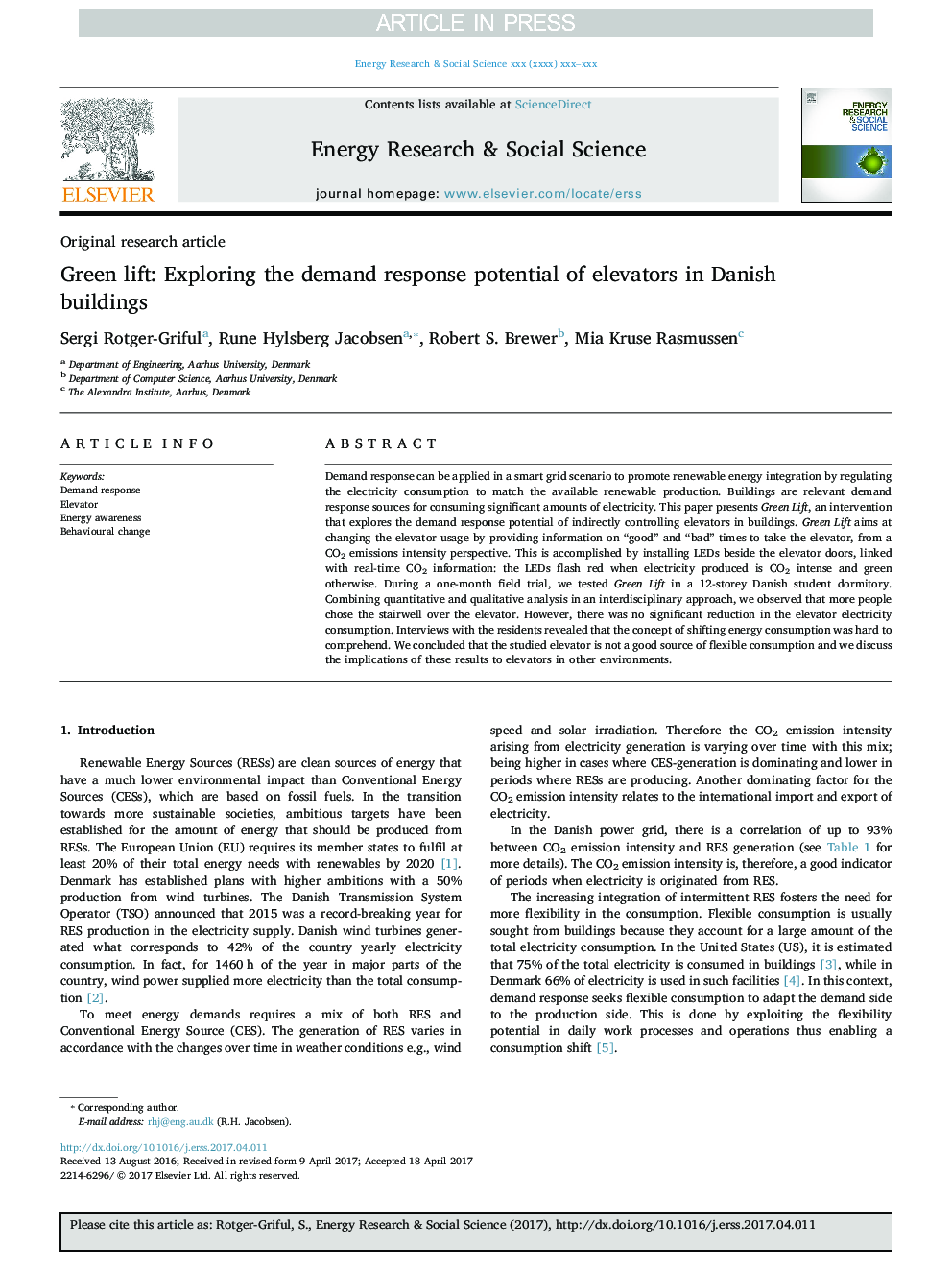| Article ID | Journal | Published Year | Pages | File Type |
|---|---|---|---|---|
| 4761664 | Energy Research & Social Science | 2017 | 10 Pages |
Abstract
Demand response can be applied in a smart grid scenario to promote renewable energy integration by regulating the electricity consumption to match the available renewable production. Buildings are relevant demand response sources for consuming significant amounts of electricity. This paper presents Green Lift, an intervention that explores the demand response potential of indirectly controlling elevators in buildings. Green Lift aims at changing the elevator usage by providing information on “good” and “bad” times to take the elevator, from a CO2 emissions intensity perspective. This is accomplished by installing LEDs beside the elevator doors, linked with real-time CO2 information: the LEDs flash red when electricity produced is CO2 intense and green otherwise. During a one-month field trial, we tested Green Lift in a 12-storey Danish student dormitory. Combining quantitative and qualitative analysis in an interdisciplinary approach, we observed that more people chose the stairwell over the elevator. However, there was no significant reduction in the elevator electricity consumption. Interviews with the residents revealed that the concept of shifting energy consumption was hard to comprehend. We concluded that the studied elevator is not a good source of flexible consumption and we discuss the implications of these results to elevators in other environments.
Related Topics
Physical Sciences and Engineering
Energy
Energy (General)
Authors
Sergi Rotger-Griful, Rune Hylsberg Jacobsen, Robert S. Brewer, Mia Kruse Rasmussen,
